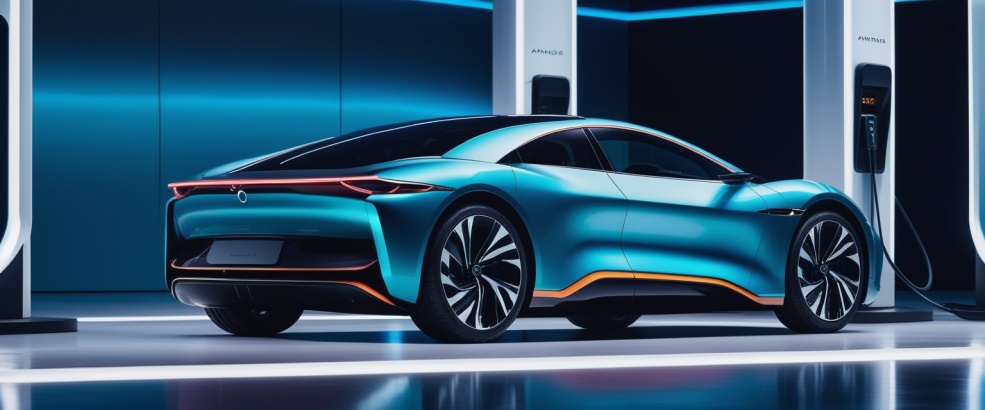Introduction:
The automotive industry has long been a symbol of innovation and progress, constantly evolving to meet the ever-changing needs and desires of consumers. From the invention of the first automobile to the integration of advanced technologies like electric propulsion and autonomous driving, the automotive sector has continually pushed the boundaries of what’s possible. In this article, we’ll explore the latest trends, advancements, and challenges shaping the automotive landscape today.
Electric Revolution:
One of the most significant shifts in the automotive industry in recent years has been the rise of electric vehicles (EVs). With concerns over climate change and air pollution growing, consumers are increasingly turning to electric cars as a cleaner and more sustainable alternative to traditional internal combustion engine vehicles.
Leading this charge is Tesla, the electric vehicle pioneer founded by Elon Musk. Tesla’s innovative approach to EV design and manufacturing has not only captured the attention of consumers but has also forced traditional automakers to accelerate their electric vehicle programs. Companies like Volkswagen, General Motors, and Ford have committed billions of dollars to develop electric vehicles and invest in battery technology to improve range and charging infrastructure.
The transition to electric mobility is not just about reducing emissions; it’s also driving innovations in vehicle design, performance, and connectivity. Electric vehicles offer instant torque, smoother acceleration, and quieter operation compared to their gasoline-powered counterparts. Moreover, they can be integrated with advanced infotainment systems, over-the-air software updates, and autonomous driving capabilities, redefining the driving experience for the 21st century.
Autonomous Ambitions:
Another major trend shaping the automotive industry is the development of autonomous driving technology. Companies like Waymo, Cruise, and Uber are investing heavily in self-driving cars, aiming to revolutionize transportation and mobility services.
Autonomous vehicles have the potential to enhance safety, reduce traffic congestion, and provide greater accessibility to transportation for people with disabilities or limited mobility. By leveraging artificial intelligence, machine learning, and advanced sensor technologies, these vehicles can perceive their surroundings, navigate complex environments, and make real-time decisions without human intervention.
However, achieving fully autonomous driving remains a significant technical and regulatory challenge. Ensuring the safety and reliability of autonomous vehicles, navigating legal and ethical considerations, and addressing public skepticism are just some of the hurdles that companies must overcome before self-driving cars become mainstream.
Innovative Interiors:
In addition to electrification and autonomy, automotive interiors are also undergoing a transformation, driven by advancements in design, materials, and technology. With consumers spending more time in their vehicles, automakers are focusing on creating comfortable, connected, and personalized interiors that enhance the overall driving experience.
Digital cockpit displays, touch-sensitive controls, and voice-activated assistants are becoming standard features in modern vehicles, replacing traditional knobs, buttons, and switches. Infotainment systems are becoming more sophisticated, offering seamless integration with smartphones, navigation services, and entertainment apps.
Moreover, interior materials are evolving to meet changing consumer preferences and sustainability goals. Automakers are exploring alternative materials like vegan leather, recycled plastics, and natural fibers to reduce environmental impact and appeal to eco-conscious consumers. Additionally, modular interior designs allow for greater flexibility and customization, catering to diverse lifestyles and preferences.
Challenges and Opportunities:
Despite the promise of electric vehicles, autonomous driving, and innovative interiors, the automotive industry faces several challenges on the road to innovation and sustainability. One of the most pressing issues is the need for a comprehensive charging infrastructure to support the widespread adoption of electric vehicles. Range anxiety, limited charging stations, and long charging times remain significant barriers for consumers, highlighting the importance of investment in charging infrastructure and battery technology.
Moreover, the transition to electric mobility requires significant investments in manufacturing capabilities, research and development, and supply chain optimization. Automakers must navigate the complexities of transitioning from internal combustion engines to electric powertrains while ensuring the affordability and accessibility of electric vehicles for consumers across diverse markets.
Furthermore, regulatory uncertainties, geopolitical factors, and global economic trends pose risks to the automotive industry, affecting supply chains, trade agreements, and market demand. Global efforts to address climate change and reduce greenhouse gas emissions are driving stricter emissions standards and regulations, shaping the future of the automotive industry and influencing technological innovation and market dynamics.
Conclusion:
In conclusion, the automotive industry is undergoing a period of unprecedented change and innovation, driven by electrification, autonomy, and advancements in interior design and technology. Electric vehicles are reshaping the way we think about transportation, offering a cleaner and more sustainable alternative to traditional gasoline-powered cars. Autonomous driving technology promises to revolutionize mobility, improving safety, efficiency, and accessibility for millions of people around the world.
However, realizing the full potential of these advancements will require overcoming significant technical, regulatory, and economic challenges. From expanding charging infrastructure to ensuring the safety and reliability of autonomous vehicles, automakers, governments, and other stakeholders must work together to address these hurdles and accelerate the transition towards a greener, safer, and more connected future of mobility. By embracing innovation, fostering collaboration, and prioritizing sustainability, the automotive industry can continue to thrive and shape the future of transportation for generations to come.

